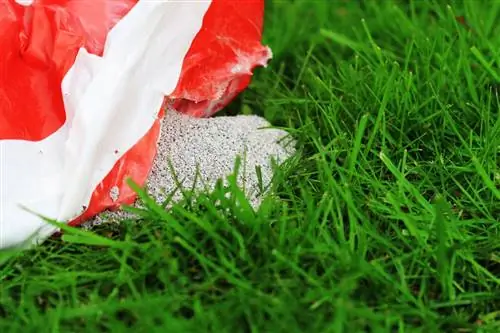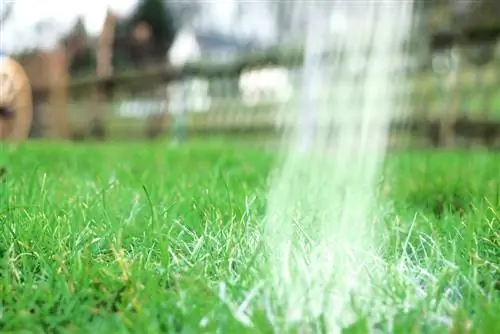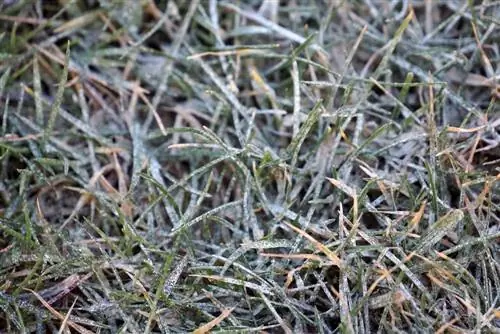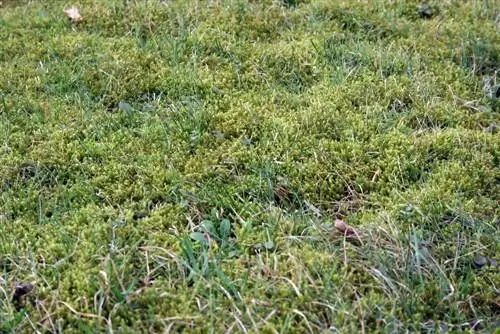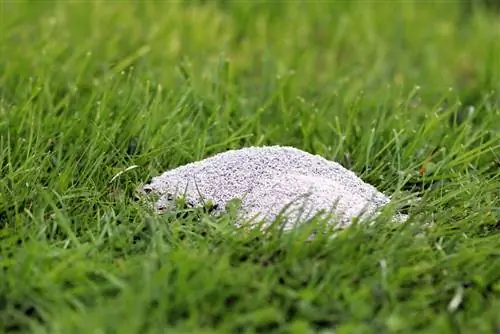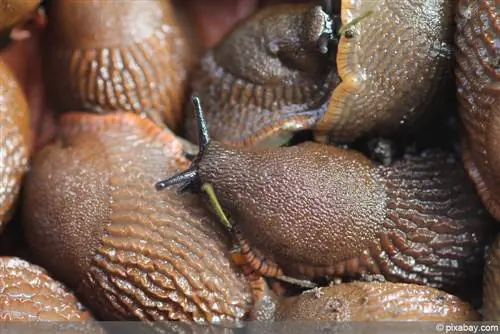- Author admin [email protected].
- Public 2023-12-17 03:39.
- Last modified 2025-06-01 06:48.
Moss is the enemy of every lawn and is therefore not welcome by any gardener. An effective remedy against unwanted mosses is lime.
What is lawn lime?
From a chemical perspective, the frequently discussed lawn lime is in most cases so-called calcium carbonate with the formula CaCO3. This is also referred to as so-called “mild” lime products, as calcium carbonate corresponds exactly to the substance that occurs in nature. Artificial products are much more reactive due to other compounds, but are rarely used on lawns.
What does lime do?
Calcium carbonate has strong alkaline properties. This means that it is able to change the pH value of the soil towards alkaline values. Depending on the nature of the soil and the product used, the intensity of the effect and thus also the amount of lime required varies.
The effect against moss
But why does liming actually work so well against moss? These undesirable spore plants thrive particularly well in moist, acidic soils. Although mosses do not explicitly prefer acidic soils, these undemanding plants also thrive here. Lawn plants, on the other hand, can only cope with slightly acidic soil with a pH value of 6 or a maximum of 5.5. If the value continues to fall, the grass will wither and moss can take over. Lime is able to raise the pH value back to the optimal value for lawns.
ATTENTION:
Limiting does not kill mosses! It simply returns the soil to a pH range suitable for lawn plants!
The right time for lawn lime
Basically you can lime all year round. However, it is recommended that the measure be carried out in spring when growth begins. This way you can tackle the moss early, the lawn has good conditions for a quick recovery and the spring rainfall favors the effect of the lime.
Suitable lime
Basically, any product containing calcium carbonate is suitable for raising the pH value. However, some products that are not specifically designed for lawns are very reactive and damage the plants. Therefore, avoid experimenting and only use special products for lawns.
Uses for lime on lawns
Similar to lime sludge etc., lawn lime could theoretically also be used as an aqueous solution. However, the practical distribution as a powder is much easier and even possible without complex equipment. In addition, lime solution settles on the leaves and only reaches the actual soil after heavy rain or watering.
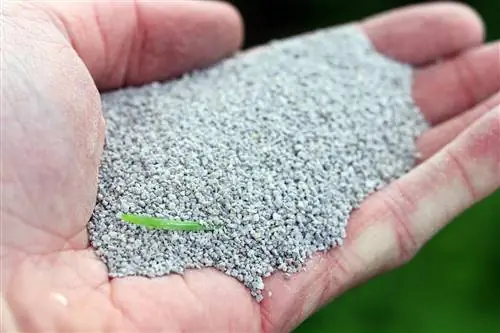
How to use lawn lime
Now that you know about the effects of lime, use it correctly in your own garden as follows:
Step 1 - Scarifying
Before the actual liming, you should scarify your lawn to remove any existing moss. How to return the area to a condition from which the lawn plants can recover and develop:
- Mow the lawn as usual and pick up the grass clippings
- Drive over the lawn in straight paths with the scarifier
- Carry out another drive across the first drive
- Pick up and dispose of loosened thatch and moss
Step 2 - Determine the amount of lime
In order to use the right amount of lawn lime, you must first determine the existing soil pH value and then calculate the required amount of calcium carbonate:
- Determine pH value by using pH test strips following the instructions
- From the actual and target value (for lawns between 7, 5 and 6) calculate the need for increase, e.g. from determined 5 to target value 6=increase by 1, 0
- Calculate the required quantity according to the lime manufacturer's instructions, e.g. 50 grams per 0.1 pH increase and square meter=1.0 / 0.1=10 x 50 grams=500 grams per square meter required
Step 3 - Liming
Now apply your natural pH value increaser to the area to be worked on:
- Spread lime evenly over the lawn, e.g. with a spreader
- Ideally before expected rain
- Alternatively, water the lawn thoroughly after liming
INFO:
In order for the calcium carbonate of the lawn lime to actually develop its effect, it depends on moisture. It is therefore ideal to use it before it rains. Otherwise, the dry powder will lie on the ground and will not be able to penetrate into the top layer of soil.
Step 4 - Check pH value
After you have successfully completed your efforts, you should check the pH value achieved again:
- Check soil pH using test strips
- If necessary, calculate the amount of lime again as described
- OPTIONAL: Seed gaps and empty spaces in the lawn

